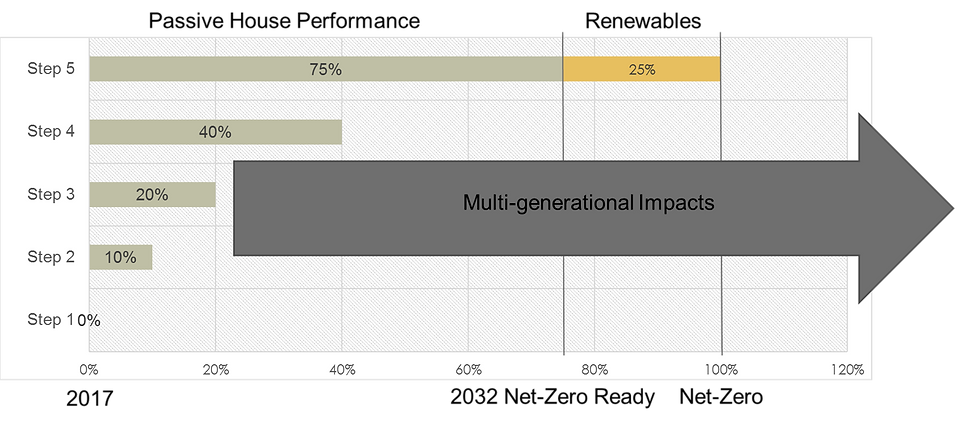BC Energy Step Code - The Stretch Building Code
- Brett Sichello
- May 4, 2016
- 3 min read

The Province of BC has released a report providing a pathway for homes and buildings to be Net-Zero ready by 2032. Eventually, all buildings will be required to achieve Passive House energy performance levels or use approximately 70% less energy than current 2016 building code standards. When considering older building stock, the energy savings are even greater.
For those outside of the building circles, this is a big deal! While many assume that the building code on its own guarantees energy performance, it does not. Rather, it’s purpose is primarily to provide minimum levels of health and safety, and although it specifies minimum insulation levels, the actual performance of homes and buildings vary considerably based on how the building is designed and constructed. In today’s world of real estate, consumers are guaranteed nothing in terms of performance, only the option to choose the colour of lipstick.
The new pathway presented, known as the Energy Step Code, is performance based. This means that every home and building will be required to be energy modeled prior to construction and then tested for airtightness during construction as this is the only proven way to ensure performance.
The path to 2032 includes a total of five steps to slowly improve the quality and durability of construction, comfort for occupants and energy performance of homes and buildings. Step 1 is intended to require designers and builders to test and measure projects based on the current BC Building Code. Step 5, 16 years from today, is intended to almost meet the Passive House standard requirements. It is also the level of performance that the Province has defined as being Net-Zero ready.

It will be up to local government to adopt these steps to both require and incentivize higher public and private building performance. It would be of great benefit for regions to collaborate to adopt the steps together to provide regulatory consistency and more easily build collaboration and capacity in the region to support implementation and enforcement. Local governments should encourage these aggressive measures not only to reduce their operating and energy costs, but to provide their residents with options that are much more affordable to operate and are more resilient to increases in energy costs.
Although this is a step in the right direction, it is not necessary to wait for the implemenation of each step to achieve Net-Zero homes and buildings today. At Brett Sichello Design, we’ve been designing, energy modeling and consulting on low energy homes and buildings for clients who recognize that it is a poor investment to build an inferior building now when this is the direction development is inevitably headed. What happens to the value of an inefficient building when after 2032, all new buildings will be significantly more efficient, less costly to operate, maintain and provide significantly higher occupant comfort?
If a municipality, institution or quite frankly any project, public or private, needs to build a new building before 2032, why not build to the highest efficiency now rather than the guaranteed burden of high long term energy costs and avoidable costly renovations?
From the industry and policy perspective, if we are concerned about the daunting task of retrofitting the existing building stock, why delay implementing the maximum economically feasible energy efficiency possible today? It is as if between now and 2032 we are creating planned obsolescence.
There are a growing number of organizations including BC Housing, City of Vancouver, Okanagan College, University of Northern BC, the Vancouver Coastal Health Authority as well as numerous private developers that have the foresight to build the best building they can today because they understand that they cannot afford to wait.
The question we are asking is, why wait 16 years? The homes and buildings of 2032 are already here, today!




Comments